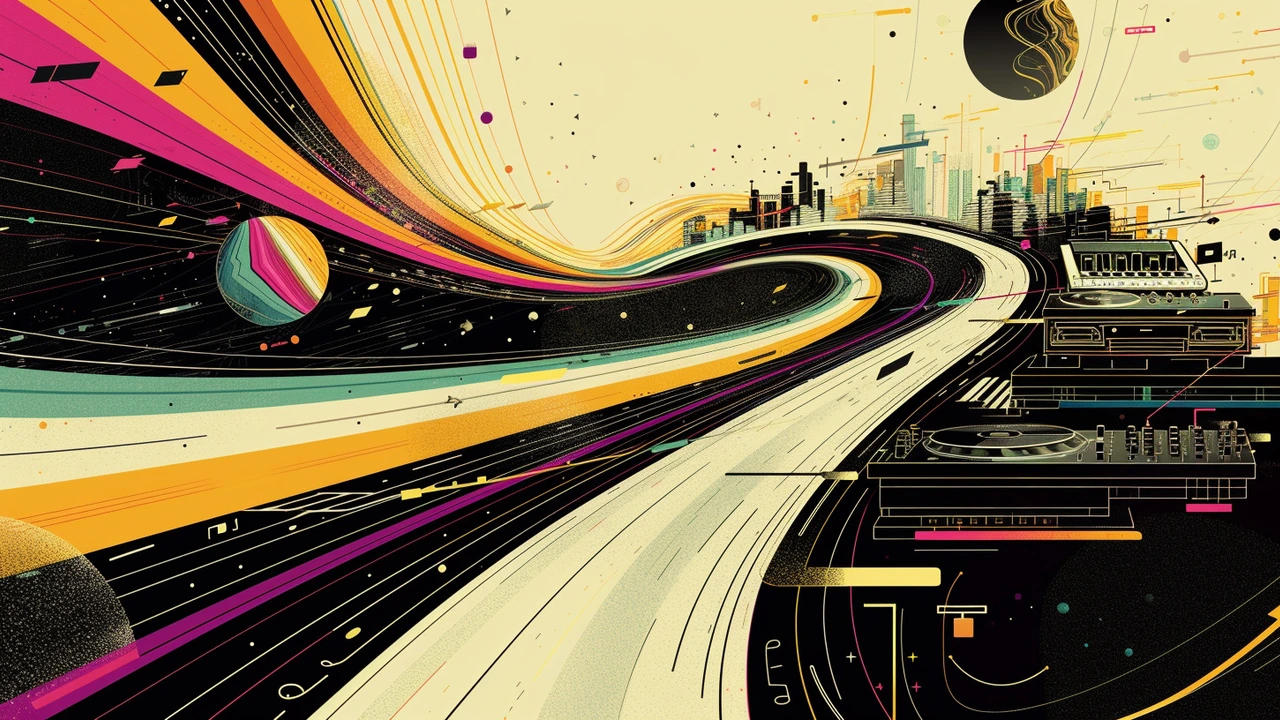The Pioneering Days of Electronic Music
Long before electronic music became synonymous with dance floors and festival stages, it was the outcome of experimental forays into the manipulation of sound. The theremin, one of the first electronic instruments invented in the 1920s, would lay the groundwork for an era of discovery. It wasn't until the 1950s and 1960s, though, that electronic music would start to form its own identity with the advent of musique concrète and tape music, which used recorded sounds as raw material for composition. Academic settings were the incubators for these sounds—electronic music was at first the domain of the avant-garde.
At this stage, electronic music was largely relegated to the realms of academic and experimental performance. Pioneering composers like Karlheinz Stockhausen and Pierre Schaeffer were not just creating music; they were crafting sonic experiences that challenged the traditional notions of what music could be. Their work laid the intellectual foundation for electronic music, emphasizing experimentation with timbre and structure over melodies and harmonies. Also pivotal during this period was the BBC Radiophonic Workshop, a unit created for the purpose of producing experimental soundtracks and new music for radio and television. It's within these innovative circles that the seeds of electronic music as we know it were planted.
The Synthesizer Revolution
The 1970s witnessed a watershed moment for electronic music with the introduction of synthesizers and sequencers. These devices changed the game, making it easier for artists to create complex, layered sounds. The Moog synthesizer, developed by Robert Moog, is perhaps the most iconic of this era. It attracted musicians from across the spectrum, from classical to rock, who were eager to explore its potential. Bands like Pink Floyd, Kraftwerk, and Tangerine Dream became known for their use of synthesizers, and in doing so, brought electronic music to a wider audience.
As synthesizers became more accessible, the boundaries of music were expanded. Artists were able to craft new textures and ambiences, resulting in otherworldly tracks that both mirrored and sparked the imagination of a generation. From Giorgio Moroder's pulsating disco beats to Jean-Michel Jarre's vast synthesizer landscapes, the '70s laid the foundations for diverse electronic subgenres. It was a time of sonic innovation, a period when the electronic timbres heard on pop records were often indistinguishable from those more experimental origins.
The Rise of Electronic Dance Music
The 1980s and 1990s heralded the birth of what we now think of as electronic dance music (EDM). In Chicago, the raw energy of house music was being distilled in clubs like The Warehouse, which is how the genre got its name. Detroit's answer to this was techno, with its relentless mechanical rhythms. Across the Atlantic in Europe, rave culture was taking hold, with humongous gatherings centered around high-tempo beats like those of acid house and trance.
This era marked a shift in electronic music from the domain of individual listening to a collective experience. Artists and DJs became the new rock stars, capable of commanding massive crowds, all united under an expansive tent of electronic sound. But even as dance music exploded, the genre remained as varied as ever. Ambient music, for instance, veered off into a space of its own—calmer, slower, and more contemplative. At the same time, artists like Aphex Twin and The Prodigy were pushing boundaries in their respective niches, proving that electronic music was not monolithic.
Technology and the Democratization of Electronic Music
The advent of digital audio workstations (DAWs) and affordable home recording equipment in the late 1990s and early 2000s was the next big leap for electronic music. Suddenly, creating music didn’t require a warehouse full of expensive equipment. This democratization fostered a surge in creativity and allowed for a multitude of subgenres to flourish. Bedroom producers could craft hits that would make their way to clubs around the world, and the line between creator and consumer began to blur with remix culture taking center stage.
In the age of streaming and social media, electronic music continues to innovate and adapt. Genres like dubstep and EDM have enjoyed intense popularity, while niche genres keep bubbling up from the ever-creative underground scenes. There's a kind of feedback loop between technological innovation, cultural trends, and artistic creation that keeps the genre fresh and perpetually evolving. As we look back on the sprawling, interconnected saga of electronic music, it's clear that its journey mirrors the technological and social revolutions of the past century-and there's no sign of it slowing down any time soon.

